Streamer Fishing: Float Your Lane
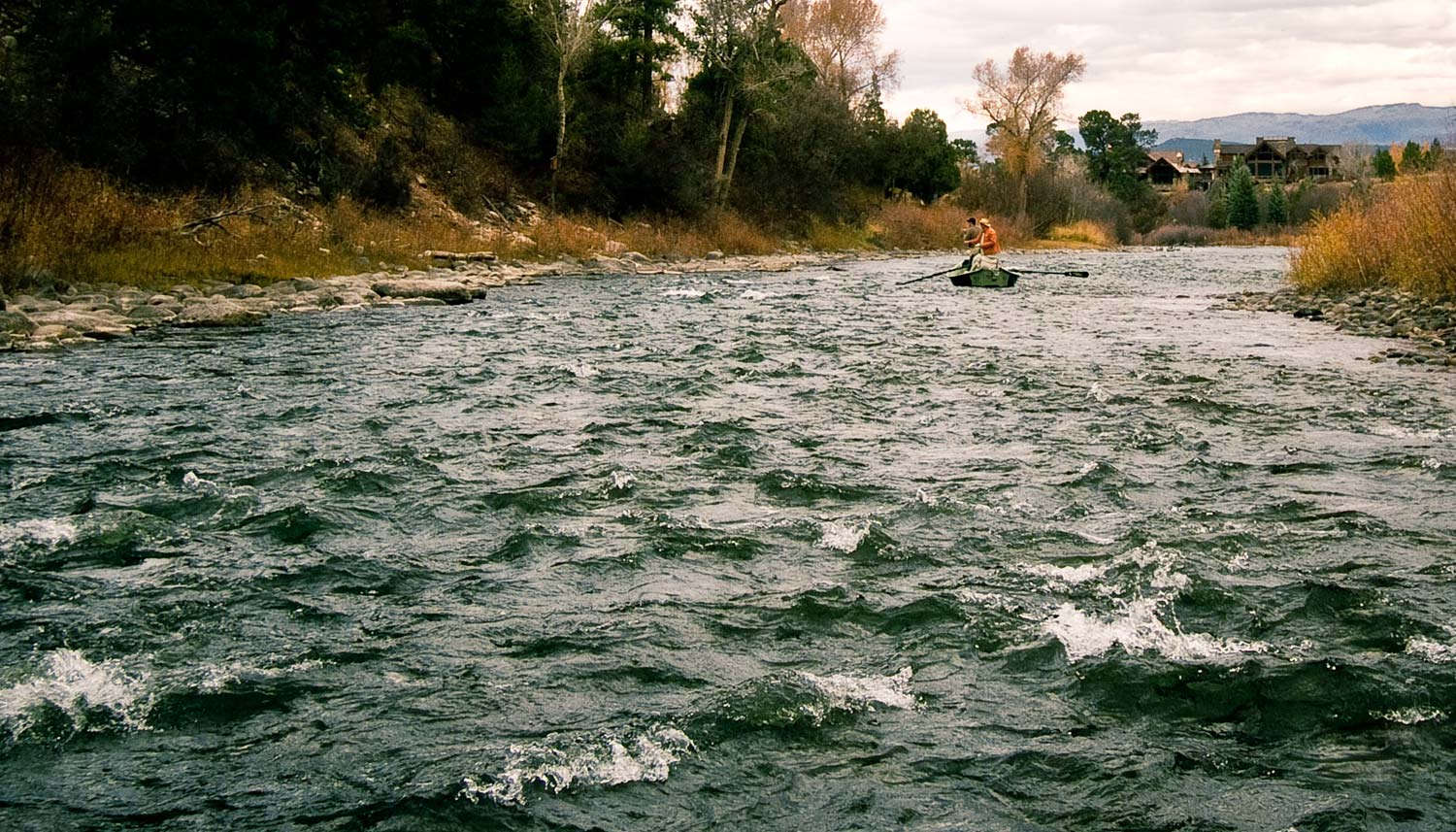
By Louis Cahill
When you are fishing streamers from a boat, how close should you be to the bank?
Ask a dozen anglers and you may get a dozen answers. The distance that works for me, might not work for you, but I’m going to share some thoughts that might help you decide for yourself where your lane is.
I’m just home from a great week of dorado fishing in Argentina. Dorado fishing is streamer fishing at it’s highest level and it’s incredibly challenging, both physically and mentally. It involves taking lots of long accurate casts. Well, that’s the conventional wisdom. I have my own thoughts about it and the group had some lively conversation on the topic. It really helped me focus in on what I think works. Not just for dorado, but for any streamer fishing.
The key to success is making good, accurate presentations to as many likely holding spots as possible. The more good presentations you make, the more likely you are to find that trophy fish who’s ready to eat. It’s a numbers game but with some qualifiers. They have to be good presentations and they have to be in the right spots. Most, but not all, of those spots are along the bank.
In general, when fishing streamers, you do not need to strip the fly all the way back to the boat. In fact, doing so is detrimental to your cause. There are of course some exceptions, but in those cases it’s worth asking if you are really fishing the bank. The structure of most trout rivers is such that the strike zone is in the first fifteen feet or so next to the bank. Once your fly is moving out of the holding water, it’s time to cast again.
What you want is to work that strike zone as efficiently as possible, hitting as many likely pockets as you can. That means dropping the fly against the bank, making six to ten strips, and hitting the next pocket. For every angler there is
Read More »4 Tips For High Water Trout Fishing
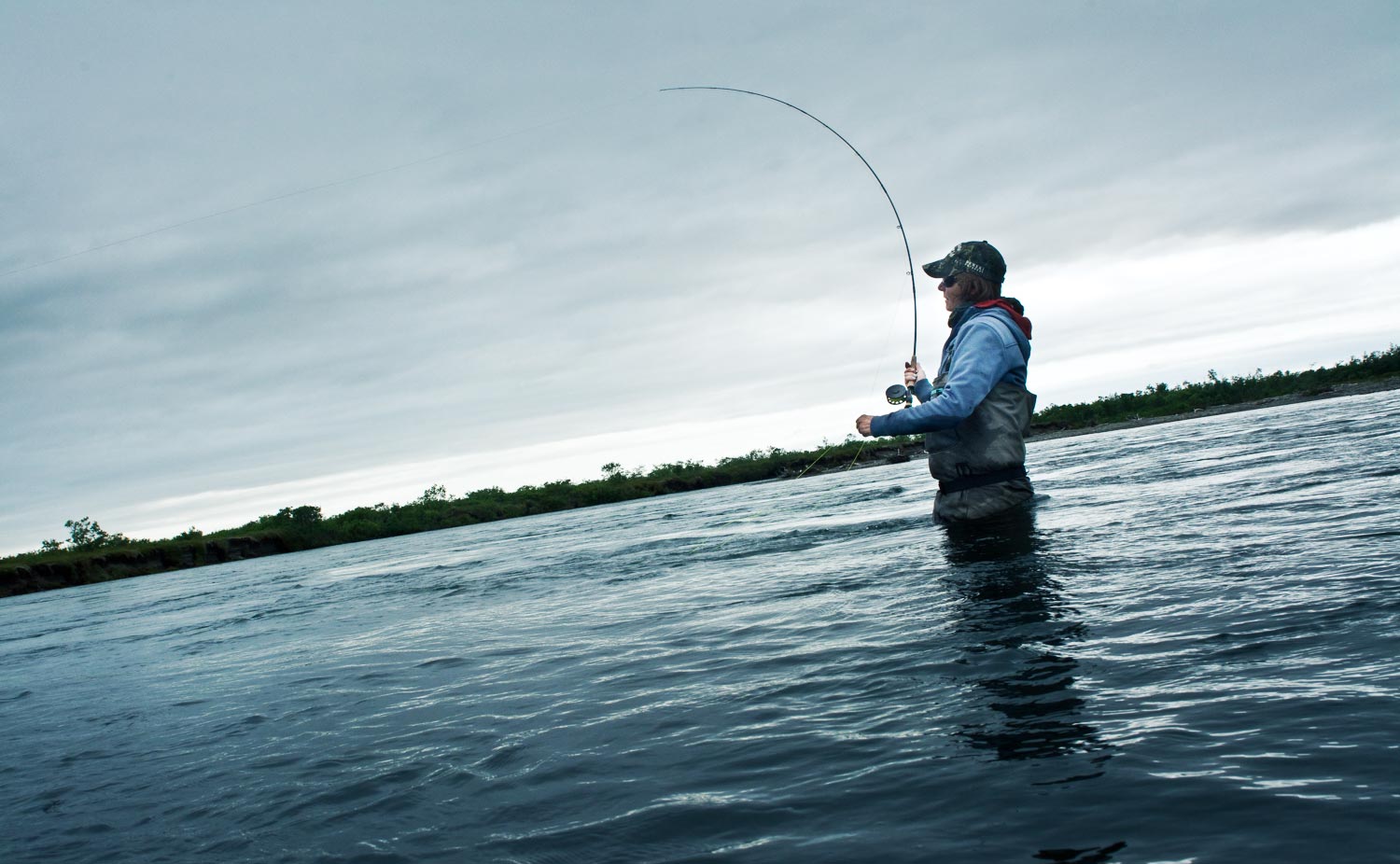
These tips will help you catch fish when the river is up.
Anglers in parts of the west are looking at high water for the foreseeable future. High water can be a fly anglers friend. A swollen river might spoil your dreams of big trout sipping mayflies in the film but if you adapt to the conditions you can still enjoy good fishing and the chance at a real trophy. Here are 4 tips to help you be successful during this season’s high water.
Head upstream
While the lower sections of larger rivers may be pretty stained, you can almost always find fishable conditions further upstream. If visibility is too poor on your larger rivers, it might be time do do some blue lining and check out those headwater streams where conditions are better.
Look for points of refuge
High water forces fish to stack up in places where the current is not so strong. Eddies and inside bends where the water is slower can be very productive. You can sometimes catch a handful of fish out of small pockets you’d walk past at normal flows. Structure becomes even more important in heavy water. Pay extra attention to blowdowns and submerged boulders.
Match the hatch that isn’t
Read More »Fight Big Fish with the Butt Section of the Fly Rod Not the Tip

If you fly fish long enough and pay your dues, it’s just a matter of time until you hook into a giant fish and experience defeat.
I’ve always loved the saying, “It’s always the big ones that get away”, like it provides anglers a viable excuse for losing battles with big fish. I’ll admit there are times when we’re at complete mercy of big fish, and defeat is 99% inevitable, but most battles are lost due to angler error, specifically by fighting big fish incorrectly with the fly rod.
For many anglers, every time they lose a big fish, a portion of their fish-fighting confidence disappears with it, and they become more paranoid with each unsuccessful encounter. Overtime, this paranoia and lack of confidence distorts their fish fighting instincts, and they begin to play big fish too conservatively, thinking if they put more pressure on the fish, the tippet will break or the hook will pull free. What they end up doing most of the time is fighting the fish with their rod tip instead of fighting the fish with the mid-section and butt section of the rod. This seriously limits an anglers ability to apply power and steer the fish during a fight, because all the power comes from the butt and mid-section of the rod, not the tip. It also will keep the leverage in the fish’s court, which will take it far longer for you to tire out a big fish. Fight times can be doubled, sometimes even tripled, and that’s bad news for a trophy specimen if the battle is taking place during the year when oxygen levels are low (you can play a fish to death). Furthermore, the longer the fight is prolonged, the better the chance something could go wrong, resulting in a fish being lost during the fight (teeth wearing through tippet, fish raking you across rocks and breaking line, fish snapping you off in a snag, ect).
Fight a big fish the right way
First, set your drag precisely before you wet a line. Doing so, you’ll be confident if you begin applying too much pressure on a big fish, your reel will smoothly let out fly line. Second, when applying side pressure (to flex the mid and butt sections
12 Tips For Hike-In Fly-Fishing
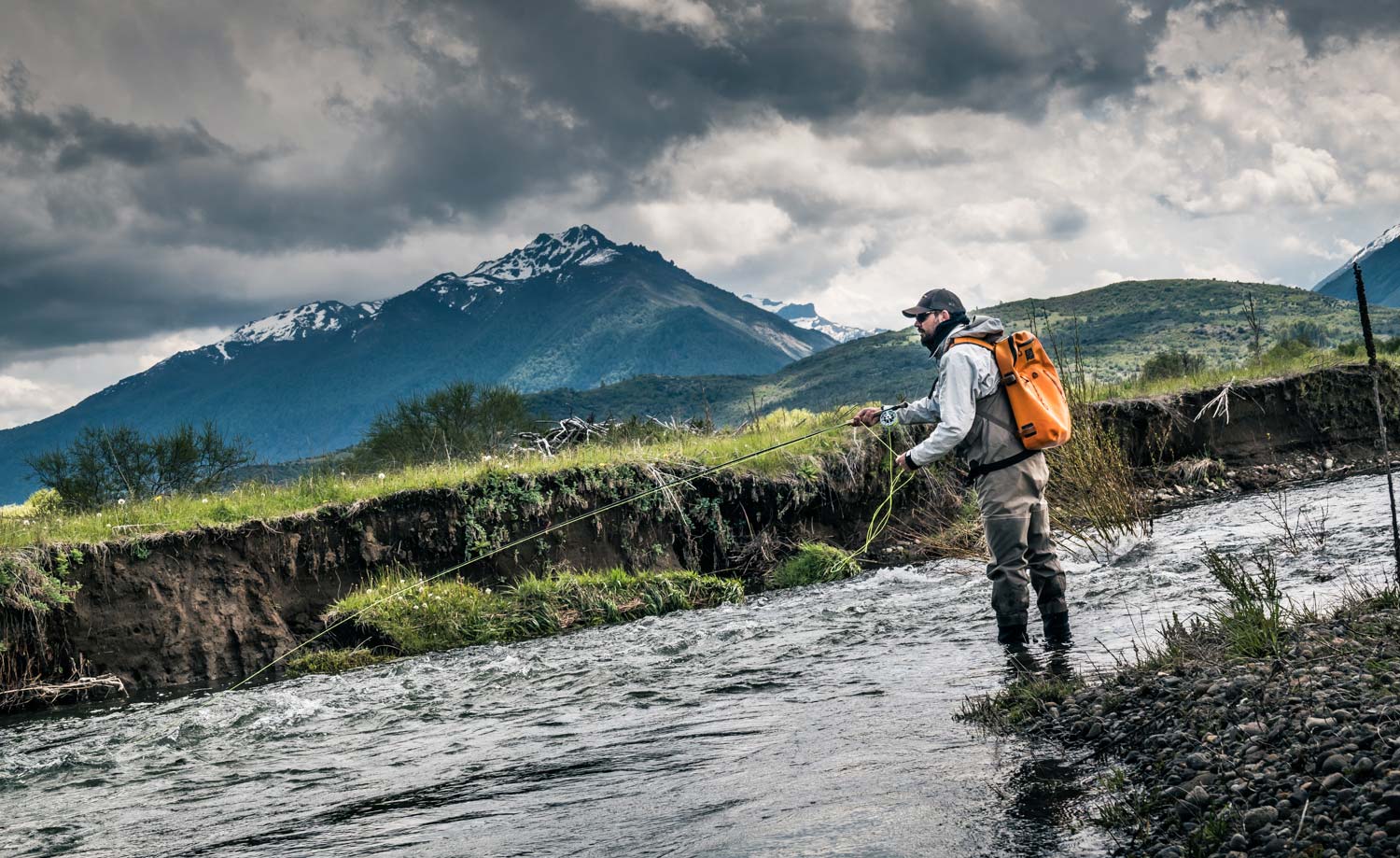
By Louis Cahill
Every angler knows that the further you walk, the better the fishing.
Keep that in mind when I tell you, I recently had some of the best trout fishing of my life in the Andes mountains of Patagonia. That should give you some idea how much we walked. The rewards where big. The rivers we fished were pristine and without a trace of humans, the views and wildlife were stellar and the trout were big and plentiful. That’s worth the walk seven days a week.
I did have to spend some time thinking through my gear and necessities for the trip. Hike in fishing requires a little more preparation, even when you are just day-hiking. Simple stuff you might run back to the truck for can turn into a big deal miles up the trail. Most of this is common sense but I will try to be thorough for the uninitiated.
Here are 12 tips for a day of hike-in fly-fishing.
Boots, Wading vs. Hiking
I’ve broken both my feet several times. Good boots are important to me. I want something that gets good traction, gives me good arch support and good ankle support. Most wading boots make poor hiking boots so, given the choice, I’ll hike in hiking boots and change to wading boots. Sometimes the hiking takes you through the river and then, wading boots are the ticket. It helps to know the trail you’ll be taking.
Whether I’m hiking in them or not, my first choice is the Simms Intruder boots. They are actually pretty good for hiking and they are very lightweight, which is nice if you’re carrying them. A good trick is to carry a plastic bag and stash your hiking boots somewhere out of sight and safe from rain in their bag, while you’re fishing.
Camping towel and dry socks
If you are changing boots, a lightweight camp towel and a fresh pair of dry socks are really nice to have. Even if you are fishing in waders you can end up with wet socks that might cause blisters.
Day pack
A good waterproof backpack is a must have. I use the Fishpond roll top, but the new model with the T-Zip is a nice upgrade. In addition to keeping your gear dry and together, I have used these packs as flotation devices for sketchy river crossings.
Extra pockets
Pockets for frequently used gear let me fish from my backpack, without carrying a fishing pack too. It’s a good idea to pair down your gear to just the essentials. Extra gear is just extra weight to carry. The hiker’s saying, “Ounces make pounds and pounds make pain,” is true.
Rod in the sock
It’s a pain hiking with your rod put together and a tube is just extra weight. A rod sock is usually all you need to keep your rod safe. If I feel like I’m going to need more protection, I have a couple of carbon fiber rod tubes I’ll use for their light weight.
Filter bottle
A good filter bottle is absolutely necessary. Hydration is super important, but carrying water is crazy. Carry an empty bottle and drink from the river. The Katadyn Be Free is the best I’ve used. It weighs nothing and fits in a pocket.
Read More »10 Yellow Sally Fly Patterns That I Love
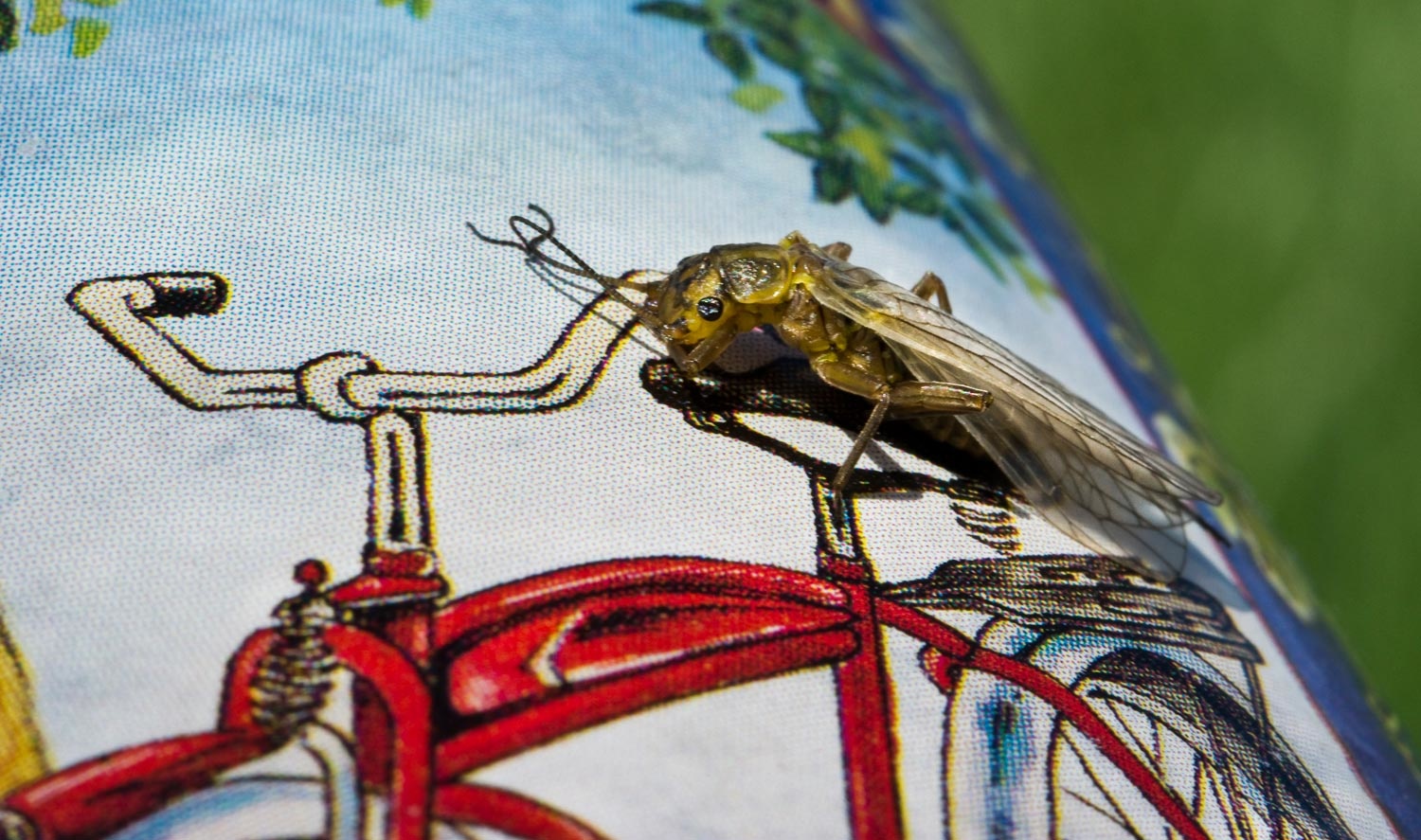
When I think back on all the times I’ve fished Yellow Sally stonefly hatches over the years, I honestly can’t remember ever having a bad fishing experience.
If I can find them on the water, I usually have no problem getting trout to take my imitations. Yellow Sally stoneflies hatch from coast to coast. Depending on where you live, they usually show up the month of May and in some areas will stick around until the end of August. You’ve got to love an aquatic insect that has a hatch period that lasts not weeks, but months. Even in the dead of terrestrial season, or when other aquatic bug hatches such as caddis or mayflies are in progress, trout will regularly forage on Yellow Sallies if they’re available. For that fact alone, fly anglers should always have a handful of Yellow Sally fly patterns stowed away in the fly box at all times. Trout love them and so should you.
With the gargantuan number of fly patterns out there these days, it can be a challenge at times to pick out the real rock stars amongst all the other players in the fly bins. Below are ten Yellow Sally patterns that I’ve personally fished and had great success with. Four are nymphs and six are dries. My hopes for this post is simply to help point fly anglers in the right direction whether it’s at the vise or at a local fly shop for stocking up on proven Yellow Sally stonefly patterns.
Read More »Fly Fishing Fast Water Chutes for Trout
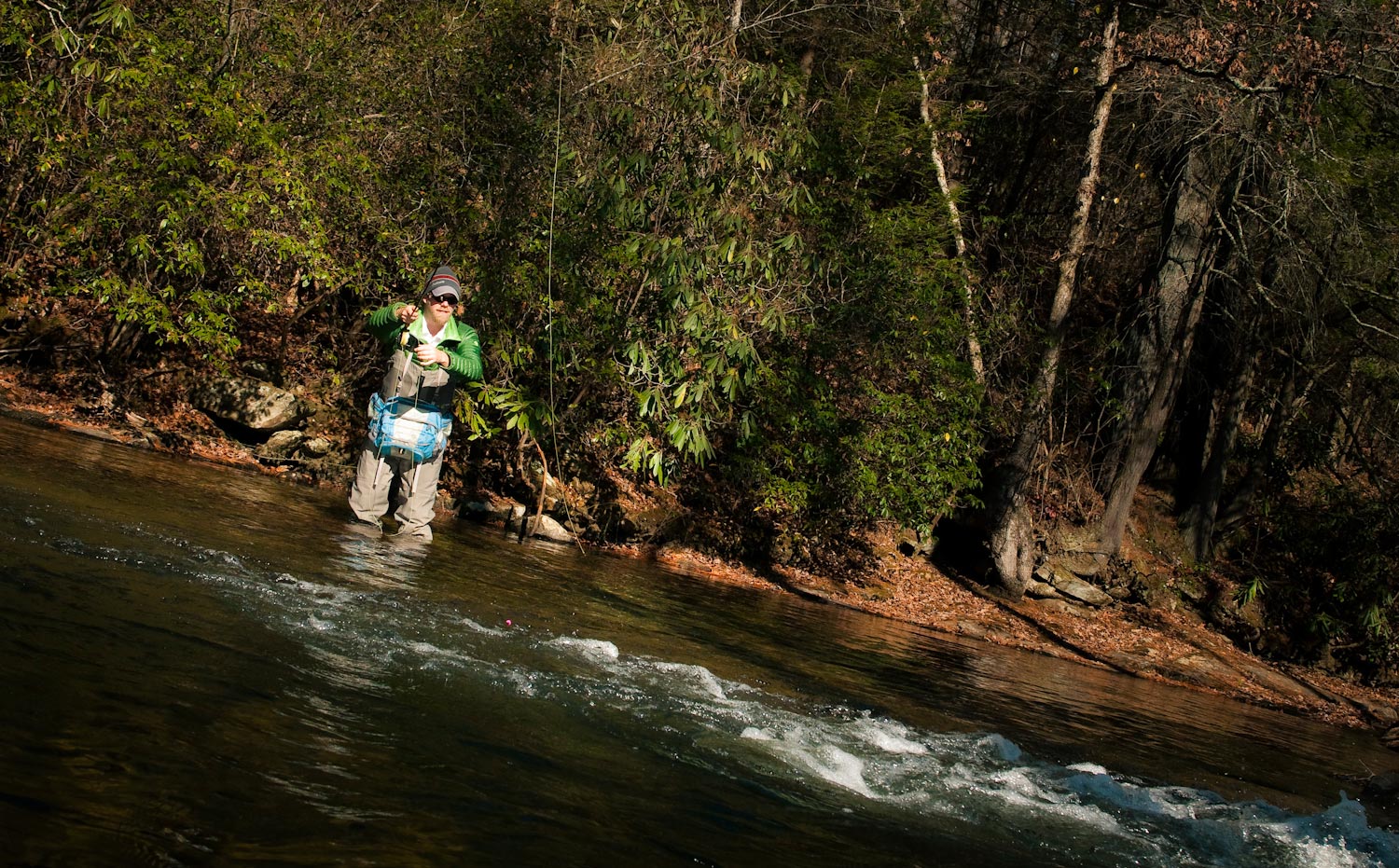
WHY TROUT LOVE FAST WATER CHUTES
Fast water chutes are great habitat for trout to set up residence around. Most of them provide everything a trout needs to survive, and fly fisherman should take the time to fish them because they almost always hold fish. Fast water chutes provide overhead cover that trout can quickly utilize by swimming into the chute if they feel threatened. The well defined current from the chute also acts as a food conveyor belt, supplying trout with a constant trickle of food 24/7. Furthermore, the turbulent waters created by chutes increase oxygen levels in the surrounding waters, and this is an added bonus and reason for trout to set up shop in and around chutes in streams and rivers. Lastly, chutes generally offer feeding lanes on each side that trout can take advantage of to feed effortlessly. These are the edges of the chute, where the fast and slow water come together and meet. Trout often gravitate towards the edges because it requires less energy to hold there, it’s very close to the conveyor belt of food and extremely close to their fast water overhead cover. Focus on drifting your flies along the edges of the chute first. After you’ve fish the edges, then work your flies through the main current of the chute.
There are multiple ways for anglers to fly fish fast water chutes, but most of the time, I find it most effective to wade to the sides of the chutes, and fly fish perpendicular to them. Doing so, it gives me better control of my drifting flies and improves my line management. Positioning to the side of a chute also improves my stealth, because I’m able to present my flies in front of the trout with just my leader, keeping my fly line out of sight. It also allows me to work with the current when drifting my flies, instead of fighting against it.
Check out the video below that demonstrates how I prefer to fish fast water chutes.
Read More »Alice’s Angle: January
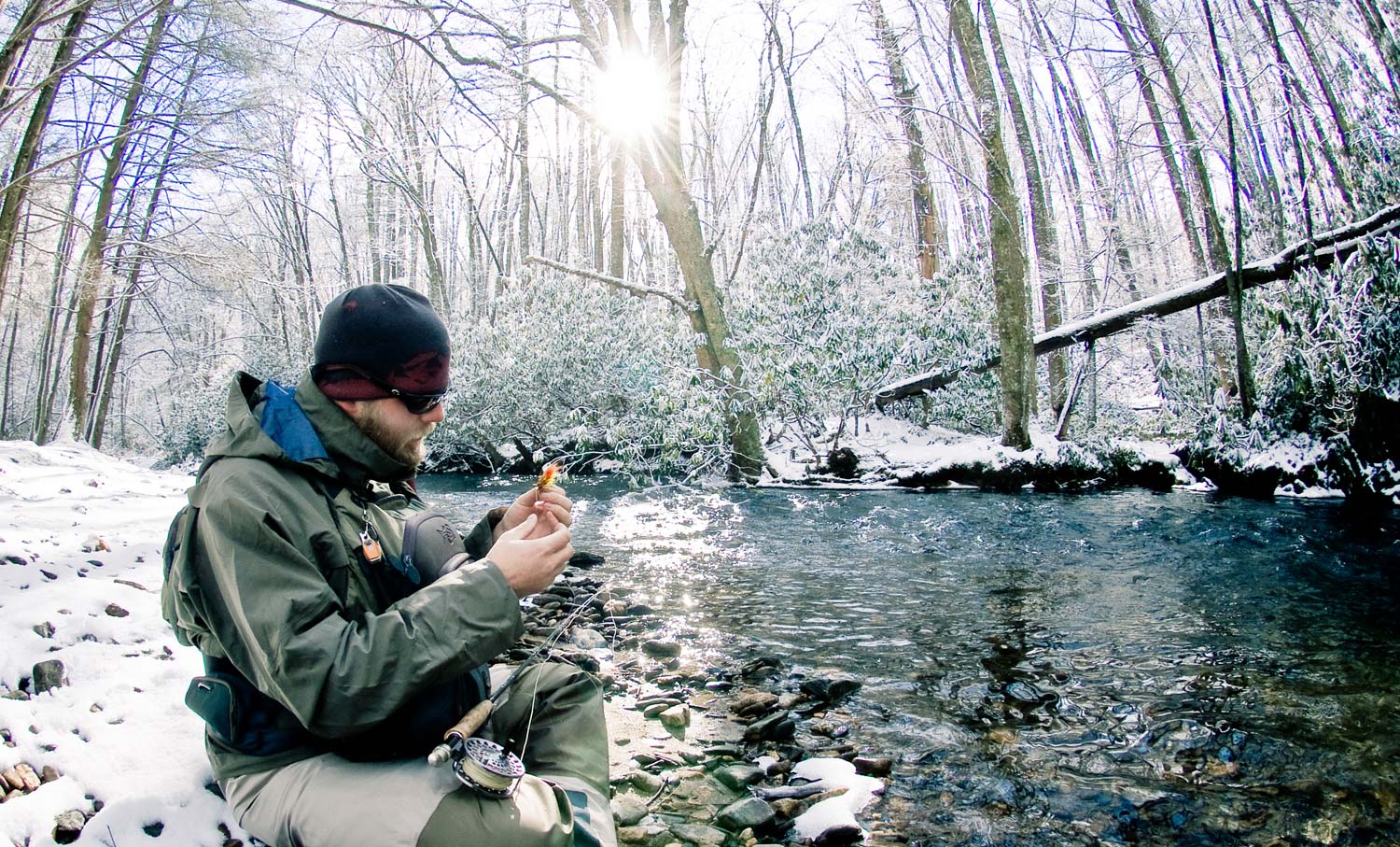
By: Alice Tesar
It’s cold out there and mid-winter fishing is reserved for the intrepid angler.
If you get skunked in January most of us would not return home and say, “eh, it was a great morning standing in mostly frozen water and icicles only formed on half my nose hairs.” Let’s talk about getting into fish without learning too many new tricks so you can be efficient on the water this time of year. If you live in Northwest Colorado you’ve been waking to sub-zero temperatures and the air rises to zero degrees around 9:30 AM. Pick a day when temperatures are warming, say above 15 degrees. As I’ve mentioned before within this series, trout are slow moving in the winter and their metabolisms are slow too causing them to eat less. Consistent with low bug activity they will often look for easy bait fish meals over hatching midges. That’s right, these bitter and cold months are the only times I really enjoy fishing streamers. I’ve been told I’m not normal before.
Why is fishing streamers different in mid-winter than mid-summer? One hyphenated word: dead-drift. Dead-drifting streamers under an indicator can be effective in shallow water and deeper pools throughout the winter. However, I lean toward fishing deeper pools this time of year. If you catch the bottom a few times you’re fishing the correct depth. Deep and slow is key. I prefer olive and copper zonkers, mayers mini leeches, and will often add a trailing copper john or bead head midge. I find that in this set up, a small streamer in a
Read More »Guiding Tip: Set Your Client Free to Build Confidence
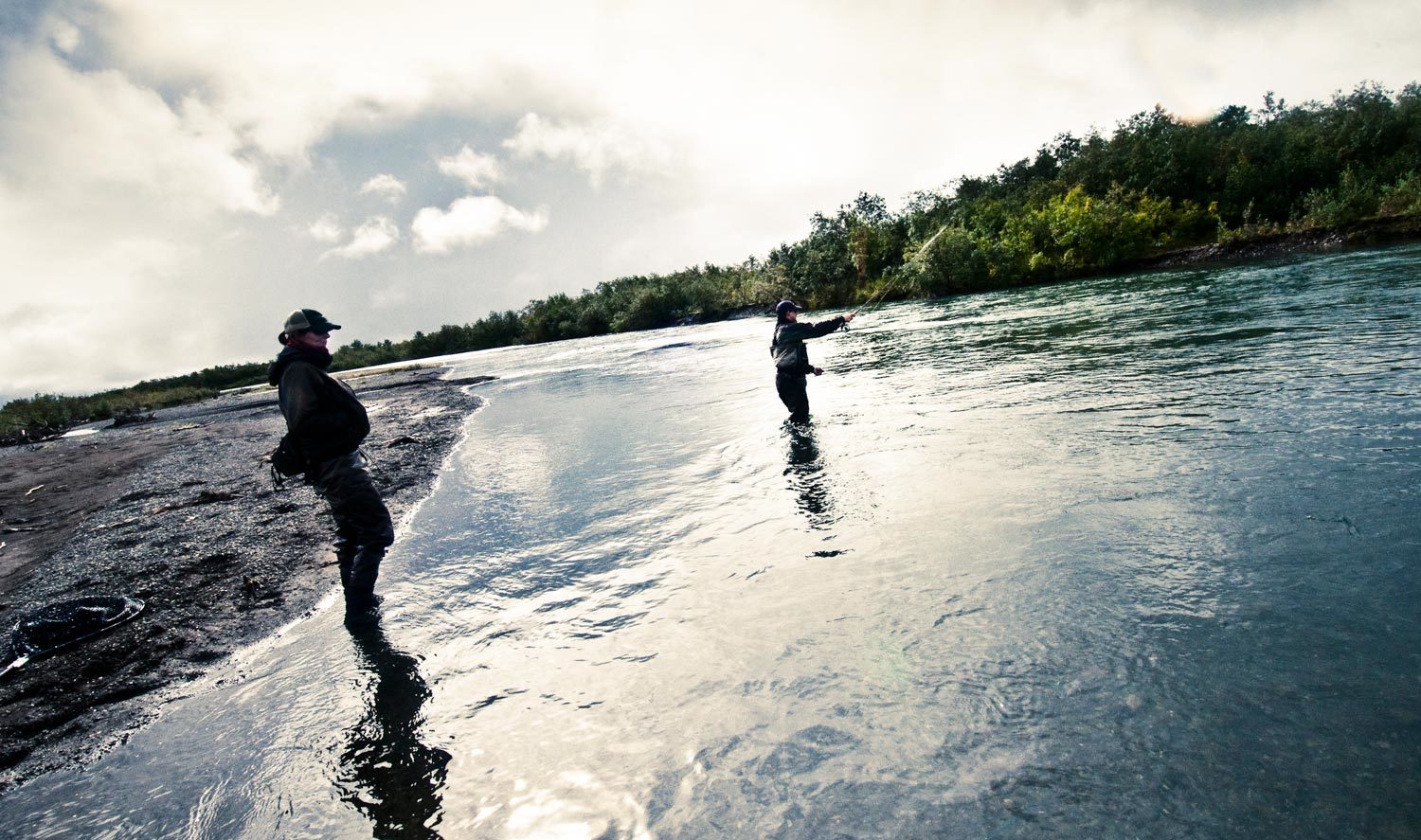
THIS POST IS FOR ALL THE PROFESSIONAL GUIDES OUT THERE WHO GIVE THEIR CLIENTS EVERY THING THEY’VE GOT EACH AND EVERY DAY. IT’S FOR THE PERFECTIONISTS, WHO TRULY BELIEVE FLY FISHING CAN NEVER BE 100% MASTERED AND ALWAYS SEE ROOM FOR IMPROVEMENT IN THEIR OWN PROFESSIONAL TEACHING SKILLS.
I’ve taken great pride over the years with my hands on style of trout guiding. When you take the time to explain the little details to your clients, and freely share what’s going on in your head, it really makes a big difference in them understanding the big picture. I’ve always believed catching fish should take a back seat to learning the how-tos of fly fishing. I’ve never seen much value in a client catching fish during a guide trip, if they can’t go out and replicate it on their own without me. It wasn’t until a few months ago, in fact, that I strayed away from my familiar guiding routine of holding onto the reigns.
Read More »Glass Is Good!
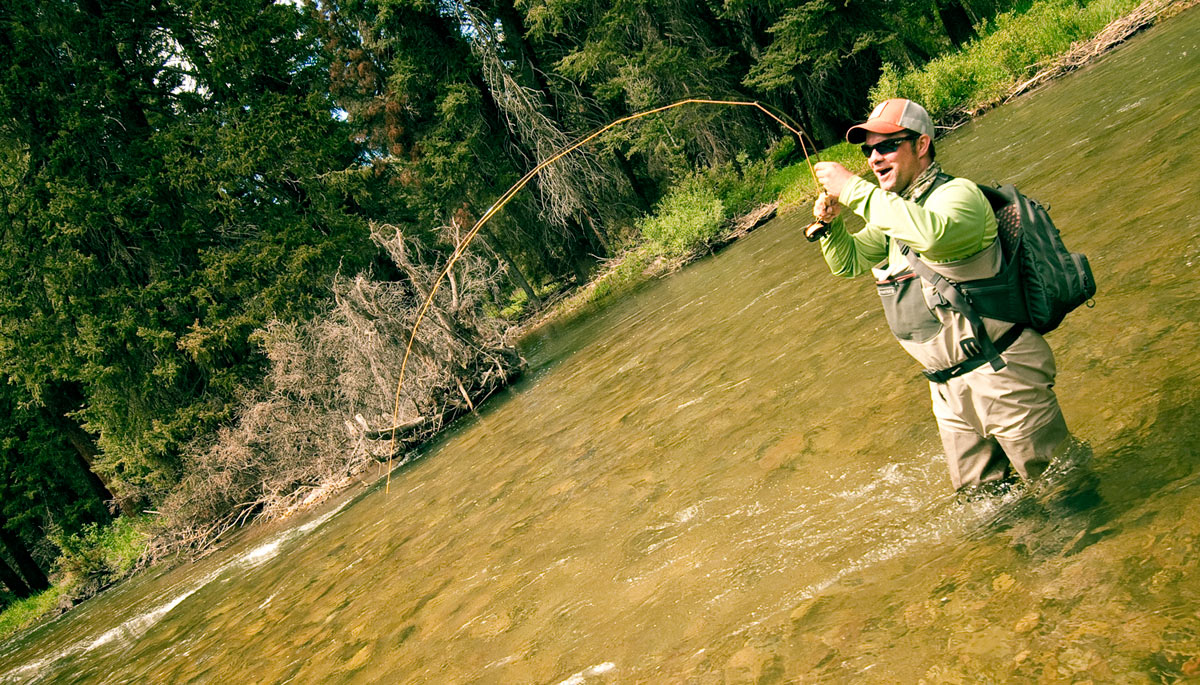
By Justin Pickett
Oh, the world of fast fly rods….
They can be great tools. Some of my favorite rods are most definitely faster than your “average joe” rod.
But what about for the beginning angler? Or someone trying to work the kinks out of their casting stroke? Is a fast rod the best thing for this angler?
Personally, I believe that fiberglass rods are the best fly rods for a beginning angler to learn the mechanics of the fly cast, and how a proper fly cast should feel. Many of the faster fly rods on the market these days are unforgiving to the beginner. These rods require powerful strokes/hauls and quicker tempos that are often hard for a beginning fly caster to achieve. In my opinion, it steepens the learning curve and can hinder one’s ability to become a proficient caster. Fiberglass rods require you to slow things down. Way down. This allows you to improve the timing of your casting stroke and work on the fundamentals. There’s more time between your backcast and forward strokes to perfect your hauls, line shooting, and accuracy. And it’s much easier to diagnose those pesky yips in your cast.
Don’t have a glass rod? Don’t want to buy one? Here’s a way to slow down your own fly rod.
I always bring a reel spooled up with
Read More »American Potcake

A GROUP OF UNIFORMED US CUSTOMS OFFICIALS HAS ASSEMBLED TO INSPECT THE CONTENTS OF MY CARRY-ON LUGGAGE BEFORE I AM ALLOWED TO LEAVE THE BAHAMAS FOR HOME.
They each peer inquisitively through the zippered opening of the black tote and repeat, “Oh my God! She’s adorable.”
I have known for years that I wanted a Bahamian Potcake for my next dog. These bright eyed, slender dogs, common throughout the Bahamas, stole my heart. The Potcake, only recently recognized as a breed, is a kind of super-mutt made up of the working dogs that colonists brought to the islands to work the plantations. They are wicked smart, hardy and, once bonded to a human, fiercely loyal. They, in many ways, exhibit the traits I admire in the Bahamian people. Not surprisingly, as they, without meaning to be insensitive, share a very similar backstory. Each has carved out a life for themselves under harsh circumstances, maintaining strong family structures, and living by their wits. The Bahamians and the Potcakes, not only exist but thrive, against all odds, and in doing so have developed a strength of character which is both admirable and endearing.
I’ve been fishing at the Andros South Bonefish Lodge for many years. The staff and guides there have become friends and the island of South Andros a place of refuge where I feel an uncommon sense of well being. There is a small family of potcakes there, who I have become attached to, the eldest being a female named Brownie. Although these dogs enjoy the adoration of anglers from around the world, they are not exactly domesticated. They are not exactly feral either but some of them, especially the puppies, are untouchable. Brownie, however, is one of the best natured dogs I have ever known and, from each litter, at least a couple of her pups has her sweet disposition. While all potcakes are great dogs, this family line is truly special to me.
South Andros is a poor island. Its people, for the most part, have big hearts and small wallets. There is no veterinarian on the island and few folks have the money to fly a dog to Nassau for medical care. Certainly not for non-essentials like spay and neuter. As a result, a huge population of feral potcakes fight for limited resources. The name potcake comes from the traditional Bahamian dish of peas and rice, which leaves a burned matt in the bottom of the pot, called the potcake. These are thrown out for the dogs and beyond that their diet is random lizards, bugs and whatever washes up on the beach. Many of them starve, or are killed for hunting livestock.
This year, things lined up for me and I decided it was time for a dog. I could adopt a dog easily at home, but what I wanted was one of the Andros potcakes. There are always fresh puppies and I found myself drawn to one in particular. A little black puppy, the runt of the litter, who the guys at the lodge named Permit because she was impossible to catch.
Read More »